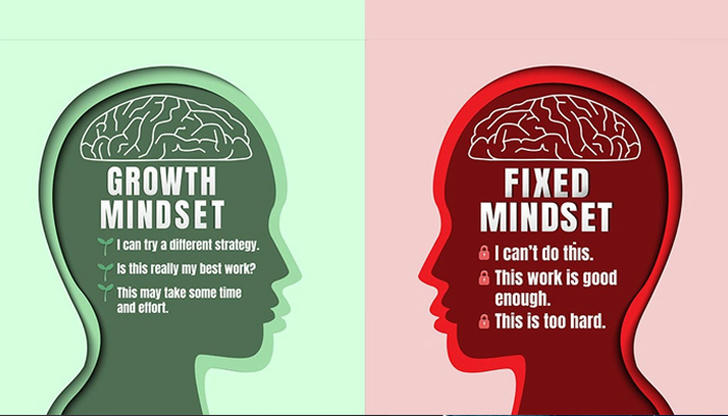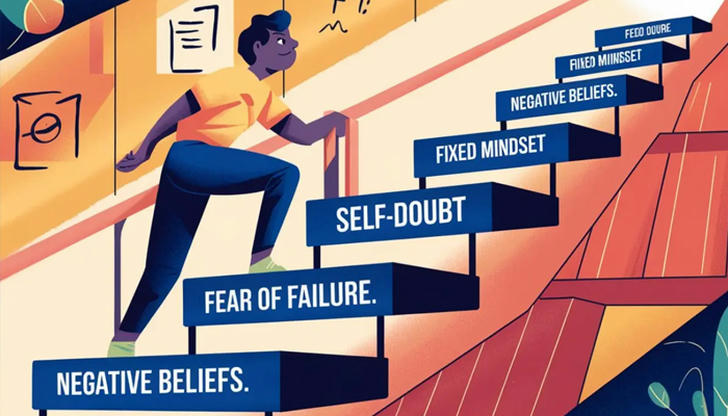Cultivating a Growth Mindset: Embracing Challenges and Learning from Failure
In today’s rapidly changing world, the ability to adapt, grow, and improve is essential to personal and professional success. One of the most powerful tools to achieve this is cultivating a growth mindset. While many people operate with a fixed mindset—believing that abilities and intelligence are static—those with a growth mindset see challenges as opportunities to learn and grow. By embracing challenges and learning from failure, you can unlock your full potential and remain resilient in the face of adversity. This article will explore how adopting a growth mindset can propel you towards success, offering practical steps and real-world examples.

1. Understanding the Growth Mindset
What is a Growth Mindset?
The concept of a growth mindset was popularized by psychologist Carol Dweck in her research on human motivation. People with a growth mindset believe that their abilities can be developed through hard work, dedication, and perseverance. They see challenges as opportunities to improve, rather than obstacles to avoid. In contrast, individuals with a fixed mindset believe their intelligence and talents are fixed traits that cannot be changed, leading to a more limited approach to challenges.
Fixed Mindset vs. Growth Mindset
Fixed Mindset: Individuals with a fixed mindset are likely to shy away from challenges, give up easily when faced with setbacks, and see effort as fruitless if they don't succeed immediately. They may avoid situations where they might fail, believing failure reflects their lack of ability.
Growth Mindset: Those with a growth mindset are more likely to embrace challenges, persist in the face of difficulties, and see effort as the path to mastery. They understand that failure is a natural part of learning and use it as a stepping stone for improvement.
The key difference lies in how each mindset views failure: a fixed mindset sees failure as a reflection of inherent inability, while a growth mindset sees failure as an opportunity for growth and improvement.
2. Embracing Challenges
Why Embracing Challenges is Important
Facing challenges head-on is crucial for personal development. Challenges push you out of your comfort zone and encourage you to build new skills, expand your knowledge, and enhance your problem-solving abilities. By stepping into the unknown, you become more adaptable, creative, and resilient—qualities that are invaluable both in your career and personal life.
Challenges also foster innovation. The more you tackle difficult tasks, the more you learn about your own strengths and weaknesses. The process of overcoming obstacles is where true growth happens.
Practical Strategies for Embracing Challenges
Set Realistic but Challenging Goals: While it’s important to challenge yourself, ensure your goals are achievable. Start small and gradually increase the level of difficulty as you gain more confidence and experience.
Push Yourself Beyond Your Comfort Zone: Take on projects or tasks that stretch your abilities. These might feel uncomfortable at first, but they are the experiences that lead to the most significant growth.
View Challenges as Opportunities: Shift your perspective on challenges. Instead of seeing them as threats, view them as opportunities to improve. The more challenges you take on, the more resilient you will become.
3. The Role of Failure in Learning

Failure as a Learning Tool
Failure is often seen as something negative, but in reality, it is a powerful teacher. When you fail, you gain valuable insights into what went wrong and how to improve. Rather than avoiding failure, individuals with a growth mindset see it as an essential part of the learning process. They ask questions like, “What can I learn from this?” and “How can I do better next time?”
For example, Thomas Edison famously said, “I have not failed. I’ve just found 10,000 ways that won’t work.” His persistence in the face of repeated failure eventually led to the invention of the lightbulb—a groundbreaking achievement that changed the world.
Examples of Successful People Who Learned from Failure
J.K. Rowling: Before becoming the author of the Harry Potter series, J.K. Rowling faced rejection from multiple publishers. Instead of giving up, she persevered, and her books eventually became a global phenomenon.
Steve Jobs: Jobs was famously ousted from Apple, the company he founded, before returning to lead it to even greater success. His journey is a prime example of how setbacks can pave the way for future triumphs.
Practical Tips for Learning from Failure
Analyze What Went Wrong: After a setback, take time to reflect on what happened. Identify the specific actions or decisions that led to the outcome, and think about what you could do differently next time.
Adapt Your Approach: Use failure as feedback to refine your approach. If something didn’t work, adjust your strategy and try again with a new perspective.
Cultivate Resilience: View failure as a temporary setback, not a permanent condition. Stay positive and keep moving forward, knowing that every failure is a chance to improve.
4. Developing a Growth Mindset: Practical Steps
Self-Awareness and Reflection
To develop a growth mindset, it’s essential to first become aware of your current mindset. Take note of your internal dialogue: do you tend to shy away from challenges or feel defeated by setbacks? Recognize these patterns and make a conscious effort to reframe them. Self-reflection helps you understand your own motivations and areas for improvement.
Surrounding Yourself with a Growth-Oriented Environment
The people you surround yourself with play a significant role in shaping your mindset. Seek out mentors, coaches, and peers who encourage growth and challenge you to do your best. A supportive network can provide constructive feedback and push you to achieve your goals.
Adopting a Continuous Learning Approach
A growth mindset requires a commitment to continuous learning. Take every opportunity to expand your knowledge and develop new skills. Attend workshops, read books, listen to podcasts, and engage in online courses. Every step you take toward learning and self-improvement reinforces the growth mindset.
5. Overcoming Common Obstacles to a Growth Mindset

Overcoming Self-Doubt and Fear of Failure
Many people struggle with self-doubt, especially when facing challenges or failure. Combat this by reminding yourself that everyone makes mistakes and that growth comes from learning. Embrace imperfection, and remember that failure doesn’t define you—it refines you.
Dealing with Setbacks and Criticism
Setbacks are inevitable, and criticism is a part of the process. Instead of viewing them as negative, use them to fuel your growth. Accept constructive criticism with an open mind, and use it as a tool for improvement.
6. Benefits of a Growth Mindset
Personal Growth
Adopting a growth mindset enhances your ability to handle challenges, adapt to new situations, and recover from setbacks. It fosters greater emotional intelligence, resilience, and adaptability.
Career Advancement
A growth mindset is essential for career growth. Employers value individuals who show initiative, embrace learning, and are willing to take on challenges. People with a growth mindset are often seen as future leaders because they are adaptable and capable of overcoming obstacles.
Enhanced Problem-Solving Skills
By viewing problems as opportunities for growth, you become a better problem solver. A growth mindset encourages creativity, critical thinking, and innovation, all of which are essential skills in today’s fast-paced world.
7. Conclusion
Cultivating a growth mindset is not a one-time effort but an ongoing journey. By embracing challenges, learning from failure, and adopting a continuous learning approach, you will open doors to personal growth and professional success. Remember, growth happens when you push past your limits, take risks, and learn from every experience—good or bad. The road to success is not always smooth, but with a growth mindset, every challenge becomes an opportunity to improve, and every failure becomes a stepping stone toward greater achievements.
